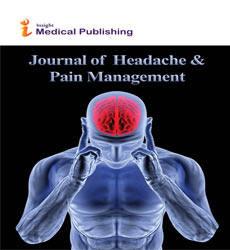Abstract
Vitamin D [25(OH)D] Serum Level on Headache Children
Background: Statistical signification between serum 25(OH)D levels and headache in pediatric population is still controversial.
Purpose of study: To study vitamin D blood levels in primary headaches and to show the relationship with clinical parameters influencing clinical course of headache.
Materials and method: 67 males (42%) and 92 females (58%), aged between 5-18 year, suffering from headache, divided into three diagnostic categories, according to ICHD-III classification: Migraine with Aura (MWA), Migraine without Aura (MWoA) and Tension-type headache (TTH). Level of Serum Vitamin D as determined by immune-histochemical methods of chemiluminescence, lower than 20 ng/ml, was considered pathological.
Results: 91 patients (57%) received a diagnosis of MWoA, 32 (20%) of MWA and 36 (23%) of TTH. Hypovitaminosis D was found in 56% of children with MWoA, in 50% of patients with MWA and in 44.4% with TTH. 12% of all the sample showed severe Hypovitaminosis D (<10 ng/ml). There were not statistically significant differences comparing Vitamin D serum levels between male and females in each categories of headache (p=0.36), but in TTH there is statistically significance (p=0.05) in adolescents and pre-adolescent than children under 10 years and in 25(OH)D serum level in children with MWoA compared to patient with MWA and THH (p<0.05).
Conclusion: Our study shows a high incidence of vitamin D deficiency in pediatric population whit headache (56%), overall in migraineurs without Aura. Probably this objet could be directly correlated with a higher frequency of migraine attacks in children with MwoA.
Author(s):
Elisabetta Tozzi, Alessandra Boncristiano, Anna Rita Antenucci and Giovanni Farello
Abstract | Full-Text | PDF
Share this

Abstracted/Indexed in
- Google Scholar
- Directory of Research Journal Indexing (DRJI)
- WorldCat
- Secret Search Engine Labs
Open Access Journals
- Aquaculture & Veterinary Science
- Chemistry & Chemical Sciences
- Clinical Sciences
- Engineering
- General Science
- Genetics & Molecular Biology
- Health Care & Nursing
- Immunology & Microbiology
- Materials Science
- Mathematics & Physics
- Medical Sciences
- Neurology & Psychiatry
- Oncology & Cancer Science
- Pharmaceutical Sciences
